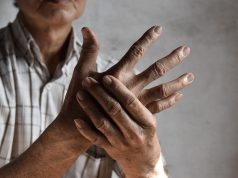Among never-smokers, rural residence, neighborhood use of coal linked to risk for COPD
FRIDAY, Dec. 7, 2018 (HealthDay News) — Rural residence and poverty are risk factors for chronic obstructive pulmonary disease (COPD), according to a study recently published in the American Journal of Respiratory and Critical Care Medicine.
Sarath Raju, M.D., from Johns Hopkins University in Baltimore, and colleagues studied a nationally representative sample of adults who completed the National Health Interview Survey (2012 to 2015) to examine the impact of urban-rural status, poverty, and other community factors on COPD prevalence.
The researchers found the COPD prevalence was almost double in poor, rural areas compared with that of the overall population (15.4 versus 8.4 percent). Both rural residence and census-level poverty were associated with COPD prevalence in adjusted models (odds ratios, 1.23 and 1.12, respectively), as were indicators of household wealth. Rural residence and neighborhood use of coal for heating were also correlated with COPD among never-smokers (odds ratios, 1.34 and 1.09, respectively).
“Future disparities research should focus on designing local cohorts to better understand the unique risk factors within rural and poor populations that contribute to the development of COPD, including environmental monitoring to capture indoor air pollution (such as solid fuel combustion),” the authors write. “These research efforts will be essential in developing strategies to reduce the burden of COPD and eliminate disparities in disadvantaged rural populations among both ever and never-smokers.”
Copyright © 2018 HealthDay. All rights reserved.








